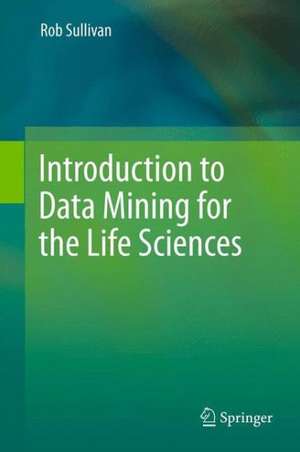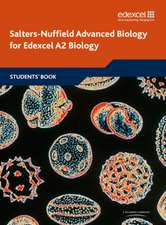Introduction to Data Mining for the Life Sciences
Autor Rob Sullivanen Limba Engleză Paperback – 3 mar 2014
| Toate formatele și edițiile | Preț | Express |
|---|---|---|
| Paperback (1) | 1290.25 lei 43-57 zile | |
| Humana Press Inc. – 3 mar 2014 | 1290.25 lei 43-57 zile | |
| Hardback (1) | 1293.37 lei 43-57 zile | |
| Humana Press Inc. – 26 dec 2011 | 1293.37 lei 43-57 zile |
Preț: 1290.25 lei
Preț vechi: 1612.81 lei
-20% Nou
Puncte Express: 1935
Preț estimativ în valută:
246.88€ • 258.46$ • 204.28£
246.88€ • 258.46$ • 204.28£
Carte tipărită la comandă
Livrare economică 07-21 aprilie
Preluare comenzi: 021 569.72.76
Specificații
ISBN-13: 9781627039482
ISBN-10: 1627039481
Pagini: 656
Ilustrații: XVIII, 638 p.
Dimensiuni: 155 x 235 x 34 mm
Greutate: 0.93 kg
Ediția:2012
Editura: Humana Press Inc.
Colecția Humana
Locul publicării:Totowa, NJ, United States
ISBN-10: 1627039481
Pagini: 656
Ilustrații: XVIII, 638 p.
Dimensiuni: 155 x 235 x 34 mm
Greutate: 0.93 kg
Ediția:2012
Editura: Humana Press Inc.
Colecția Humana
Locul publicării:Totowa, NJ, United States
Public țintă
ResearchCuprins
Introduction.- Fundamental Concepts.- Data Architecture and Data Modeling.- Representing Data Mining Results.- The Input Side of the Equation.- Statistical Methods.- Bayesian Statistics.- Machine Learning Techniques.- Classification and Prediction.- Informatics.- Systems Biology.- Let’s Call it a Day.- Appendix A.- Appendix B.- Appendix C. Appendix D.- Index.
Textul de pe ultima copertă
One of the major challenges for the scientific community, a challenge that has been seen in many business disciplines, is the exponential increase in data being generated by new experimental techniques and research. A single microarray experiment, for example, can generate thousands of data points that need to be analyzed, and this problem is predicted to increase. As new techniques in areas such as genomics and proteomics continue to be adopted into the mainstream as the costs fall, the need for effective mechanisms for synthesizing these disparate forms of data together for analysis is of paramount importance. But the sheer volume of data means that traditional techniques need to be augmented by approaches that elicit knowledge from the data, using automated procedures.
Data mining provides a set of such techniques, new techniques to integrate, synthesize, and analyze the data, uncovering the hidden patterns that exist within. Traditionally, techniques such as kernel learning methods, pattern recognition, and data mining, have been the domain of researchers in areas such as artificial intelligence, but leveraging these tools, techniques, and concepts against your data asset to identify problems early, understand interactions that exist and highlight previously unrealized relationships through the combination of these different disciplines can provide significant value for the investigator and her organization.
Data mining provides a set of such techniques, new techniques to integrate, synthesize, and analyze the data, uncovering the hidden patterns that exist within. Traditionally, techniques such as kernel learning methods, pattern recognition, and data mining, have been the domain of researchers in areas such as artificial intelligence, but leveraging these tools, techniques, and concepts against your data asset to identify problems early, understand interactions that exist and highlight previously unrealized relationships through the combination of these different disciplines can provide significant value for the investigator and her organization.
Caracteristici
Data mining involves uncovering the patterns inherent within the data Provides a set of techniques that can help the life scientist leverage the valuable data asset With each set of techniques are tangible examples to support them Includes supplementary material: sn.pub/extras






